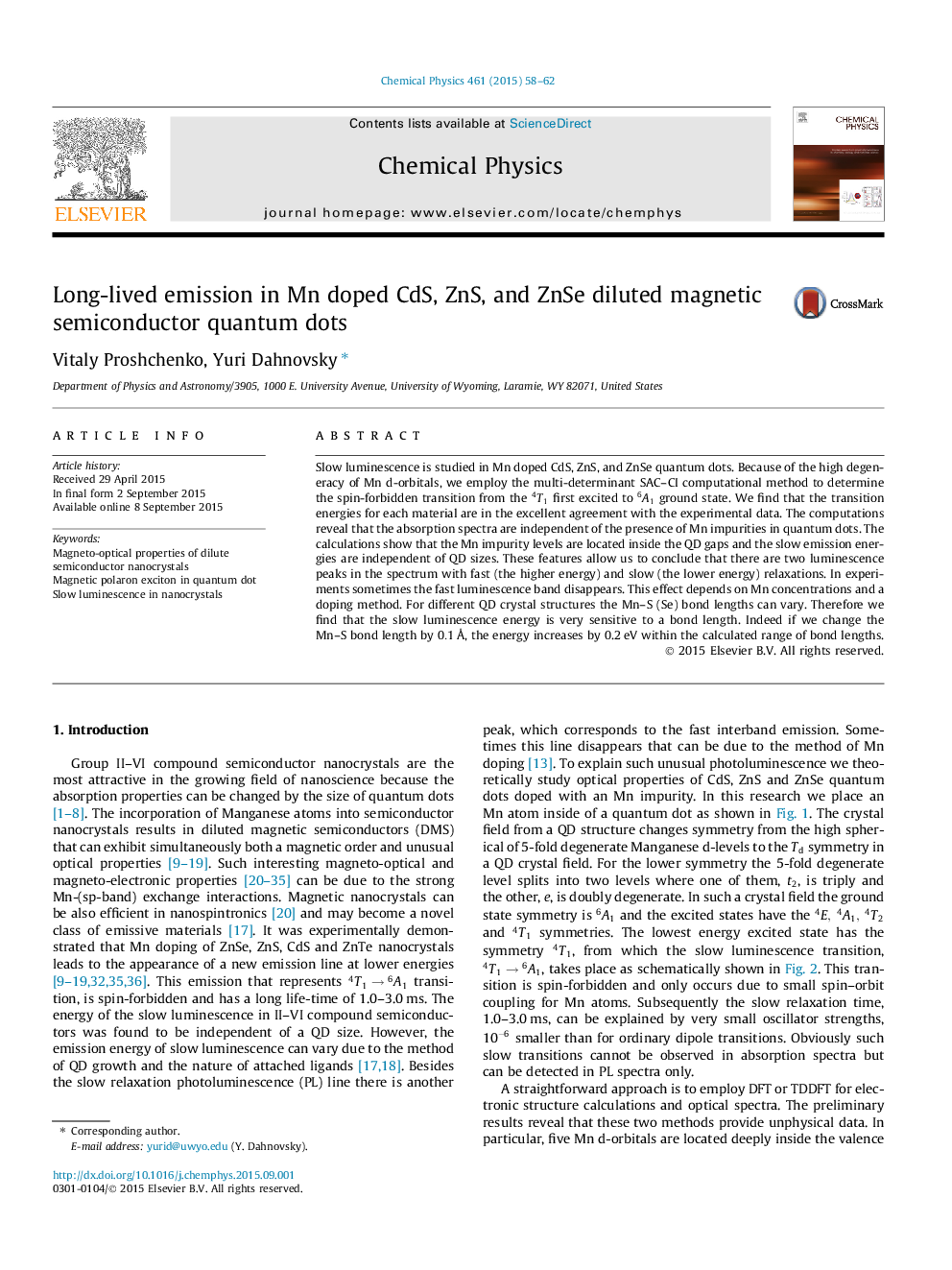| کد مقاله | کد نشریه | سال انتشار | مقاله انگلیسی | نسخه تمام متن |
|---|---|---|---|---|
| 5373137 | 1504205 | 2015 | 5 صفحه PDF | دانلود رایگان |

• Slow luminescence in Mn doped CdS, ZnS, and ZnSe quantum dots.
• Calculations reveal that the Mn impurity levels are inside the QD gap.
• Slow emission energy is independent of QD sizes.
• Two luminescence peaks in the spectrum, one is fast and the other is slow.
Slow luminescence is studied in Mn doped CdS, ZnS, and ZnSe quantum dots. Because of the high degeneracy of Mn d-orbitals, we employ the multi-determinant SAC–CI computational method to determine the spin-forbidden transition from the 4T14T1 first excited to 6A16A1 ground state. We find that the transition energies for each material are in the excellent agreement with the experimental data. The computations reveal that the absorption spectra are independent of the presence of Mn impurities in quantum dots. The calculations show that the Mn impurity levels are located inside the QD gaps and the slow emission energies are independent of QD sizes. These features allow us to conclude that there are two luminescence peaks in the spectrum with fast (the higher energy) and slow (the lower energy) relaxations. In experiments sometimes the fast luminescence band disappears. This effect depends on Mn concentrations and a doping method. For different QD crystal structures the Mn–S (Se) bond lengths can vary. Therefore we find that the slow luminescence energy is very sensitive to a bond length. Indeed if we change the Mn–S bond length by 0.1Å, the energy increases by 0.2 eV within the calculated range of bond lengths.
Figure optionsDownload high-quality image (62 K)Download as PowerPoint slide
Journal: Chemical Physics - Volume 461, 5 November 2015, Pages 58–62